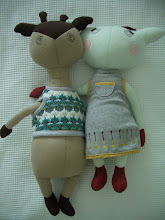I've been in my element all week busy-beeing with my homemade bunting. I'm not quite finished but thought I'd share the process so far with you.



I firstly pulled out some of my fun summery fabrics
and chose which ones I was going to use.
I made a bunting triangle pattern from a piece of A4 paper which I firstly folded in half lengthways. Then i measured down the centre fold to about 23cm and made a mark here. Finally I drew a line with a ruler from this marked point up to the opposite top hand corner and then cut along this line to give a triangle once opened out.
Then to cut the triangles out I pinned the paper pattern on each piece of fabric making sure the pattern was going in the direction I wanted it to (you can see this through the paper). Mostly I made most economical use of the fabric though when cutting out. The pic above is of some old pj's which have had their day. If you feel confident you can double the fabric over to speed things up. Use a good fabric scissors and obviously work out how many triangles you will need, allowing two triangles per piece of bunting (for back and front).
This is where I had got to with embellishing
my fabrics as described in this post. 
 To embellish them further I sewed some beads and sequins on some of the pieces. I thought the sparkles would be twinkle nicely on a sunny day in the garden.
To embellish them further I sewed some beads and sequins on some of the pieces. I thought the sparkles would be twinkle nicely on a sunny day in the garden.
I also did some hand embroidery using a metallic embroidery thread (which I split to make a little thinner). I used a variation of the blanket stitch to highlight Martins initial. Obviously this needs a good iron now before I go any further.




























































